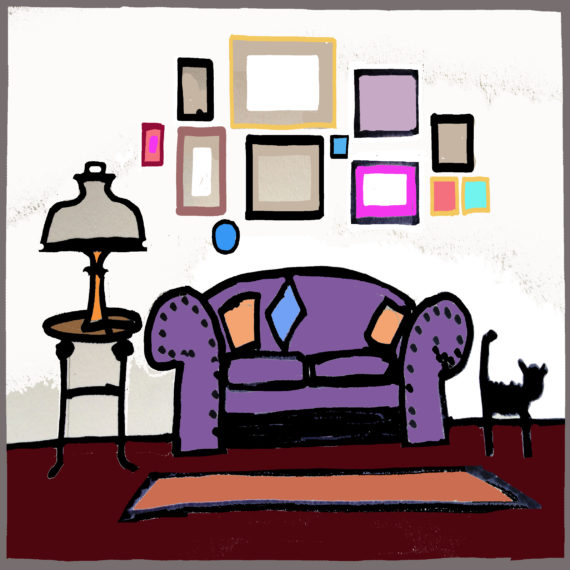Big art, middle size art, or small art? This blog is about the benefits and problems that painters have when they choose to make big, medium, or small art pieces.
Plus it is about buyers and collectors of art. They have a choice as well. Perhaps this is more important than the artist’s choice.

In nearly all cases, the display can show one big piece or a collection of smaller pieces in the same space. Interior designers seem to be fond of arranging a collection of closely hung pictures rather than one larger piece. And this kind of arrangement can mean that there is a range of different images with a common theme. It also can display a diverse collection illustrating the owner’s eclectic taste.
Such a choice means that the display can be developed with the arrangement added to, moved around, or pictures taken away over time. The variety can also be very varied with photographs mixing with originals, posters, prints, and much more.
From the buyers perspective.
Domestic collectors can show a mixed display or choose one bigger piece. However the overall space will be limited. So they have to decide.
Corporate customers are not very different from private collectors. But business buyers might have much bigger wall spaces in foyers or offices where a larger piece sets a tone but does not distract and interfere with the main function of the area.
From the artist’s perspective.
The choice that artists have to make becomes an issue because it usually made before the artist starts to make the art. The exception is if the artist is a painter of miniatures. Another is when the artist is creating digital art on a tablet because that can be expanded or contracted at will. But you can’t easily do that if you work on paper, canvas, or similar.
Artists often make their choice of big, medium, or small based on their creative space. A painter working at home will be constrained by the amount of room available. On the other hand an artist working in a larger studio may well have enough room to paint bigger pieces. So they can opt between big, medium, or small. So how do they choose?
As well as where you make the art, the choice will be dictated by the subject matter, destination, finance, or something else.
Subject.
Some subjects seem to demand a bigger surface area. An example is if the artists is painting very complex landscapes or cityscapes and needs a lot of detail. So an artist working on a smaller scale would have to pick a smaller part of the scene to paint. Whereas a much larger piece could include a wider perspective.
Destination.
If the art is commissioned then the buyer would probably ask for a piece of a certain size. If the artist is creating without a specific buyer then previous feed back would be a major influence. But it is pretty obvious that very large pieces will demand buyers with large hanging spaces, and they are more rare that medium or smaller venues.
Another factor might be where the observer is going to be. If the art display is to be seen from a distance then a big piece will be desirable rather than a collection of smaller pieces. If closer, than a collection of smaller pieces would be best.
Furthermore if the art is being displayed and sold from a gallery the dealer will be very aware of the cost of display space. Smaller wall area per piece, more variety on display, will mean a quicker turnover. This will be a major factor.
Finance.
This is the biggie. The creative space would cost more if the artist opts to be working big. Artists often fail to consider the real expense of making art. Working at home is going to be much cheaper than taking space in a big studio.
It is usually accepted that smaller art pieces are cheaper than big ones. This is because they are cheaper to make, cheaper to sell, and therefore cheaper to buy. More people can afford them, so they sell better. But if you work towards painting and selling large paintings then you could be establishing a client base that would be very desirable. But remember these clients are difficult to find and sell to. Quite a lot of prospective buyers would be buying for their business premises like hotel lobbies or office walls. When buying direct these customers will probably want to drive hard bargains and at a discount from gallery prices.
Something else.
This is the issue that might be most crucial. Is the artist’s choice between large, medium or small anything to do with their own vanity? Do they feel more important if they paint big? If so, they should look in the mirror and think about it.




